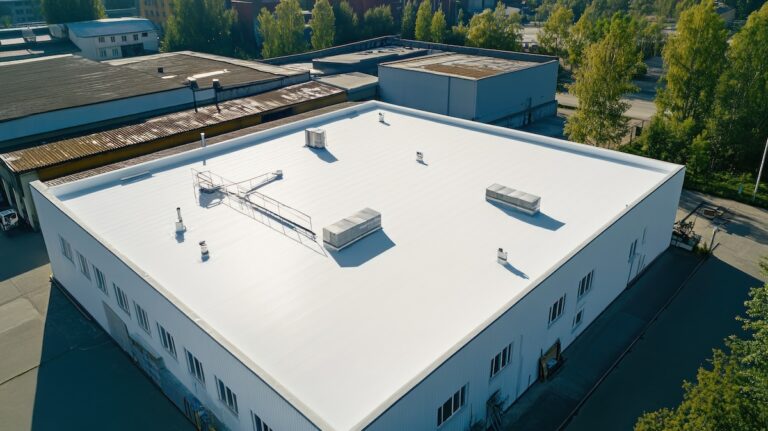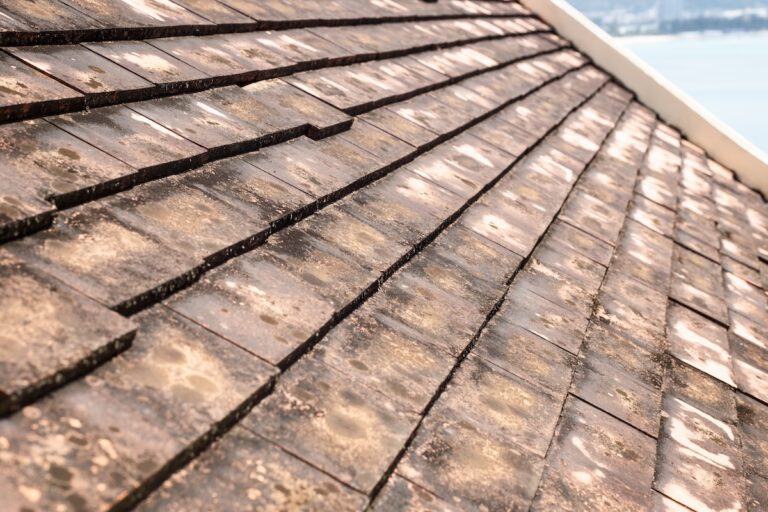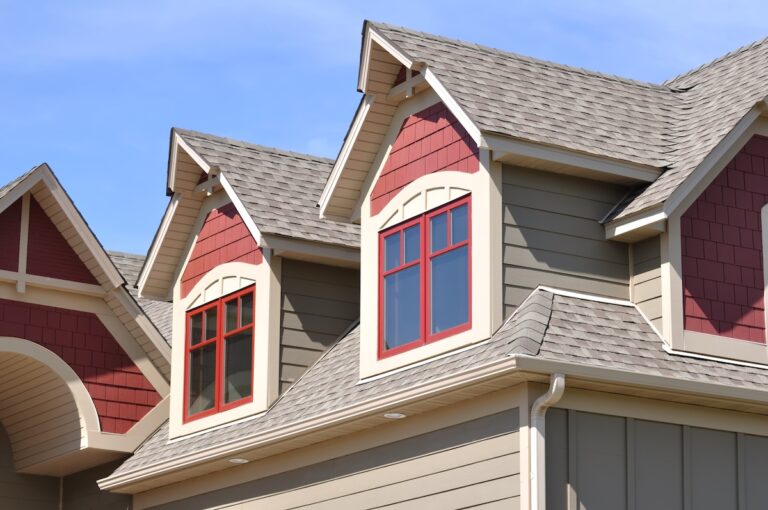A question we get often is, “How long does a roof inspection take?” Whether you need one after a storm or as part of routine maintenance, a roof inspection is a vital step in maintaining the integrity and safety of your home. Performed by professional roofing contractors, a thorough inspection ensures everything is in good condition and helps identify issues before they escalate into costly problems, like a roof leak or structural damage.
Here’s what you’ll discover in this guide:
- What happens during a detailed roof inspection
- How to plan and schedule your next inspection
- Why regular inspections can save you time and money
Your roof plays a huge role in protecting your home and family, and understanding how inspections work is key to keeping it in top condition. Let’s break it all down.
What Happens During a Roof Inspection?
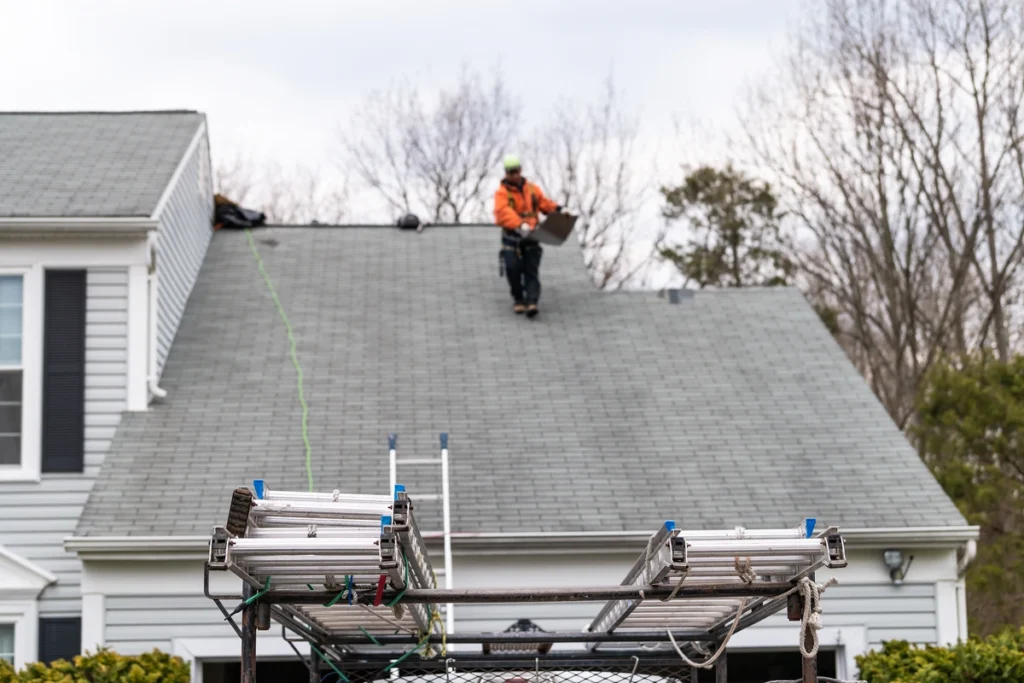
Exterior Roof Inspection
When roofing contractors assess your roof from the outside, they look for common problems that compromise its performance, including:
- Loose or Missing Shingles: These expose the underlying layers of your roof to potential water damage.
- Wear and Tear: Cracks, curling shingles, or general erosion are signs that repairs may be needed.
- Damaged Gutters: Broken or clogged gutters can lead to water pooling on your roof, causing leaks.
- Moss or Mold Growth: Organic growth can weaken the structural integrity of your roof and speed up deterioration.
Roofing contractors will typically also inspect key flashing areas, like chimneys and vents, to ensure they remain watertight.
Interior Roof Inspection
If you schedule a thorough inspection, it may include an assessment of your attic and interior ceilings. This interior inspection often reveals hidden problems that might otherwise go unnoticed:
- Water Stains on Ceilings or Walls: These indicate leaks or moisture issues.
- Rotted Wood or Structural Issues: Damaged wooden supports can compromise the overall safety of your home’s roofing system.
- Insulation Problems: Improper insulation can lead to temperature regulation issues and excess humidity, which further damages the roof.
The goal of a roof inspection is to identify trouble spots before minor issues evolve into major, expensive repairs.
How Long Does a Roof Inspection Take?
The time it takes to perform a roof inspection depends on these factors:
- Size of Your Home: Larger homes take longer to inspect than smaller ones.
- Roof Complexity: Unique designs, multiple slopes, or hard-to-access areas can require a more detailed examination.
- Existing Damage: If there is visible roof damage or signs of a roof leak, the process may take longer as contractors assess the scope of repairs needed.
On average, a roof inspection takes about one hour. While it can vary slightly, a properly conducted inspection should never feel rushed. If your inspection takes less than 30 minutes, it’s worth asking your roofing contractor how thorough their examination was.
For a detailed assessment that ensures your roof is in great shape, always work with a team dedicated to quality.
Why Are Roof Inspections Important?
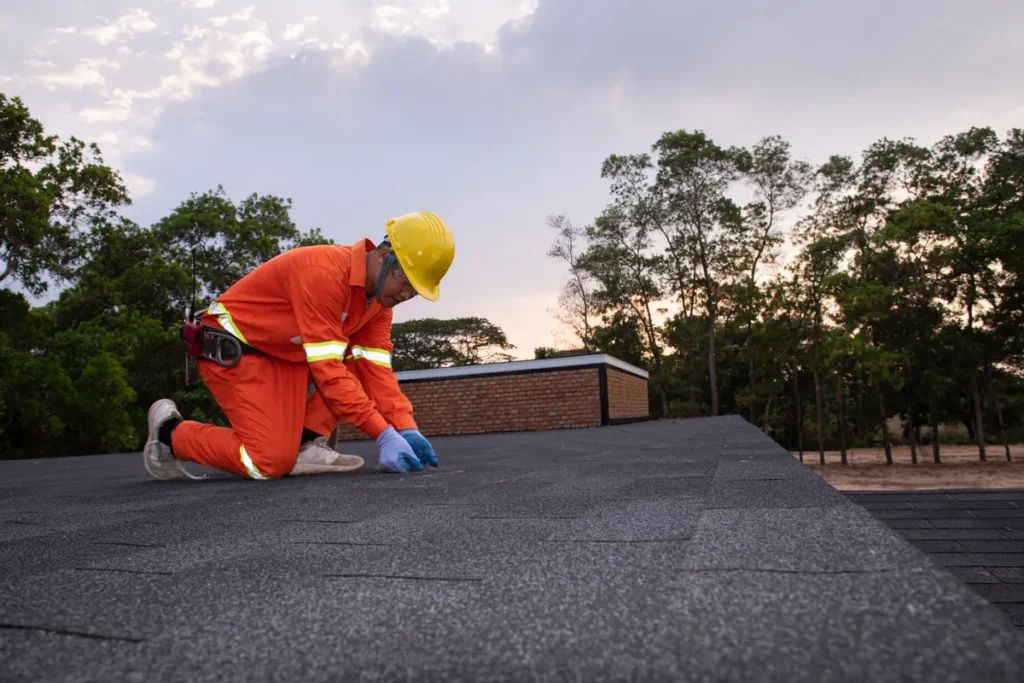
🏚️ Prevent Spreading Damage
Small problems, like missing shingles or minor leaks, often go unnoticed. However, these issues quickly escalate. For example:
- A loose shingle can allow water to seep into your roofing structure, leading to rot.
- Small leaks, left unchecked, can damage insulation, wood, and drywall, causing significant costs over time.
Routine inspections help mitigate these risks by catching problems early.
💵 Save On Costs
Minor roof repairs are much cheaper than replacing an entire roof due to negligence. Additionally:
- Repairing loose shingles costs only a fraction of what structural repairs might require.
- Annual roof inspections can extend the lifespan of your roof, delaying the expensive prospect of a full replacement.
⚠️ Maintain Safety
A damaged roof is more than just a risk to property—it can jeopardize your safety. Professional inspections ensure your roof remains stable, even in the face of heavy storms or strong winds.
⛈️ Stay Ahead of Weather Damage
Severe weather doesn’t always leave visible damage behind. However, hidden issues can worsen without immediate attention. Regular inspections after major storms ensure your home stays well-protected.
How to Plan and Schedule a Roof Inspection
Taking the time to schedule a roof inspection is straightforward. Here’s your step-by-step process for getting started:
Step 1: Choose and Contact Roofing Contractors
Work with reputable roofing contractors in your area who specialize in inspections and repairs. Look for licensed, insured professionals with strong customer reviews.
Step 2: Specify Your Needs
Whether you require a post-storm inspection or a regular annual checkup, make sure your contractors know the purpose of the inspection and any concerns you already have.
Step 3: Schedule Strategically
The best times for inspections include:
- Spring and Fall: Seasonal changes can put stress on your roof. It’s vital to assess its condition before extreme weather months.
- After Severe Weather: Hail, high winds, or heavy snowfall can create hidden damage.
- Before Major Warranty Expiration Dates.
Step 4 (Optional): Prepare For Repairs
If the inspection reveals issues, many roofing contractors can handle minor repairs on the spot. For more extensive damage, they’ll help you schedule follow-up services to fix the problem.
A properly timed inspection ensures you’re set for any season ahead.
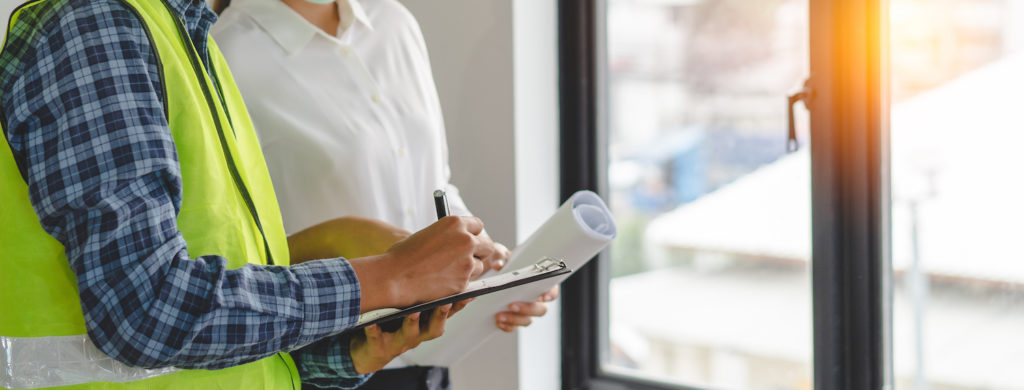
FAQs About Roof Inspections
- How long does a roof inspection take to schedule?
- It typically depends on the contractor’s availability, but an appointment can usually be secured within a week or sooner.
- Should I get a roof inspection even if I don’t see damage?
- Absolutely. Not all damage is visible, and small issues caught during an inspection can prevent costly repairs later.
- How often should I schedule roof inspections?
- Experts recommend at least one inspection per year, along with extra assessments after severe storms.
- Can I do my own roof inspection?
- While you can visually assess your roof, professional inspections offer more detailed assessments and detect hidden problems you might miss.
- Do roof inspections include an estimate for repairs?
- Yes, most inspections include a detailed report of any damage found and repair estimates.
The Team You Can Trust
We specialize in delivering thorough inspections for homeowners who prioritize the safety and longevity of their roofs. With years of experience and a commitment to excellence, our team can quickly spot potential issues and offer affordable and effective solutions.
Contact us today to ensure your home is safe, secure, and ready to weather anything.


